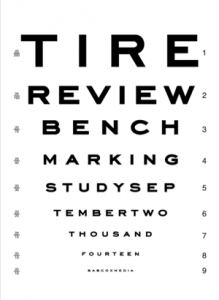Yardstick. Target. Scale. Level. Standard. These are all nice synonyms for the word “benchmark.”
“Benchmark” itself is as simple word as the others, unadorned and uncomplicated. It is only when the word is applied does “benchmark” gain real meaning.
In business terms, “benchmarking” is the act of determining a standard, a data-drive means of “measuring an organization’s processes and then identifying, understanding, and adapting outstanding practices from other organizations considered to be best-in-class.”
Finding the benchmarks brings order and great insight. It takes a jumbled pile of things we think we know and re-stamps them into those things we need to know.
At the end are the exact measures of what we are doing, how we are doing those things, and what results we experience from those actions.
Most importantly, it creates points of reference by which we may accurately compare ourselves to all others like us.
Benchmarking itself proves absolutely nothing. Yet it means everything to those that participate fully and carefully dissect the information and are willing to look at themselves in a mirror and accept what the data says.
We were fortunate that dozens upon dozens of tire dealers made the decision to participate fully, and commit their time to help us create the first comprehensive benchmarking study of U.S. tire dealers. These sharp businesspeople worked thoroughly through more than 50 detailed questions, providing the basis for the hundreds of data points gleaned.
These dealers literally created the yardstick by which you may measure your business!
Over the next few pages, we’re presenting some of the topline target data extracted, measuring points that should be of interest to all tire dealers. Those of you downloading and using our handy and free Tire Review app will have access to even more benchmarking results on the digital version of this special issue. Special thanks to Synchrony Financial for making that possible.
Those tire dealers who contributed their time and input for this first study will receive a complete personalized report that shows exactly how they stack up on all of the measures that were considered. We’ll offer the same to those participating in next year’s Tire Industry Benchmarking Study, so stay tuned.
A great deal of thanks, also, to our outstanding Tire Industry Benchmarking Study sponsors – American Tire Distributor’s Tire Pros program and Pirelli Tire North America – as well as research firm The MPI Group, who helped us pull all of this together.
Today you’re going to see a set of charts and graphs that establish the yardsticks. In November we’ll show you what tire dealers performed the best against these marks in our first Tire Review Platinum Performers Awards. And going forward, we’ll share more of this data in interesting ways. We’re excited to bring all of this to you.
Many of the accompanying charts and graphs report the median results from dealer responses. The median is considered a more realistic number to consider, representing the midpoint of data, with one-half responses above the median and one-half of responses below the median. A median of 0.0% indicates that half or more of participants reported 0 on their responses.
As always, we want to know what you think. You can reach us by email at [email protected].
Click here to view the 2014 Benchmarking Study.













